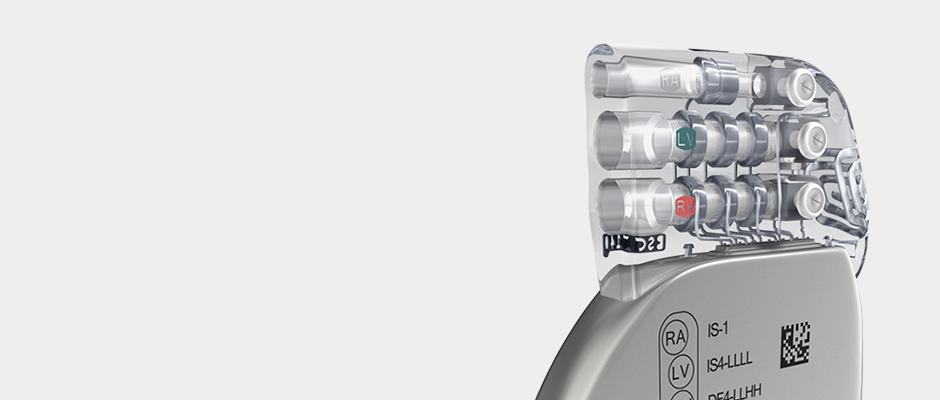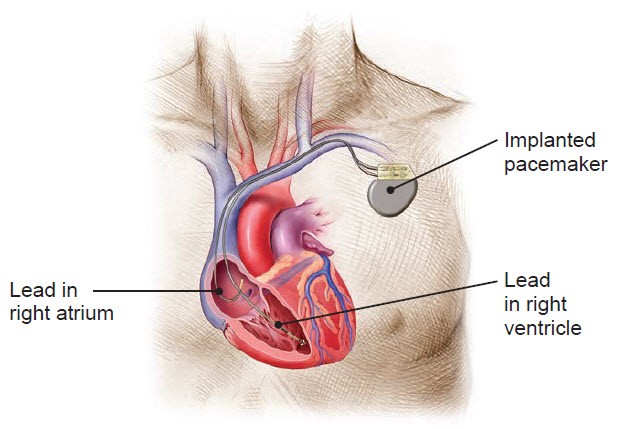
How pacemakers work
Your pacemaker stimulates your heart with electrical impulses to restore a normal rhythm, so you can live a more active life.
About 3 million people worldwide are living with a pacemaker, and each year about 600,000 pacemakers are implanted to treat people with bradycardia.1
Important to Know
- Your pacemaker delivers an electrical impulse to help control your heart rhythm.
- It stores and sends information about your heart for your doctor to review.
- A pacemaker can often be implanted with a minor surgery.
- Your pacemaker regularly checks its own battery. Your doctor will also check the battery at your follow-up visits.
What is bradycardia?
Bradycardia is an abnormally slow heartbeat, typically fewer than 60 beats per minute. Since the chambers of your heart don’t contract often enough to supply enough blood, your body doesn’t get enough oxygen and nutrients to function properly. As a result, you may feel tired or dizzy, have shortness of breath or have fainting spells.
How pacemakers work
Most pacemakers are small machines with two parts:
- A small, metal battery-operated computer that is typically implanted in the into soft tissue beneath the skin in the chest
- Wires (leads/electrodes) that are implanted in your heart and connected to the computer
The pacemaker continuously monitors your heartbeat and delivers electrical energy (as programmed by your physician) to pace your heart if it’s beating too slowly.
Your pacemaker also stores information about your heart. This allows your doctor to better evaluate the therapy and adjust your pacemaker settings, if necessary.

An implanted dual-chamber pacemaker
Your Pacemaker's battery
Just like any battery, a pacemaker’s battery will run out over time. Since the battery is permanently sealed inside the pacemaker, it can’t be replaced when it is low. If your battery is too low, you will need a new pacemaker. How long your battery will last depends on the settings your doctor programs and how much therapy you receive.
Your pacemaker will regularly check its own battery. Your doctor will also check your battery at your follow-up visits.
Pacemaker benefits
By keeping your heart from beating too slowly, pacemakers can treat symptoms like fatigue, lightheadedness and fainting. Your pacemaker can allow you to get back to a more active lifestyle by automatically adjusting your heart rate to match your level of activity.
Pacemaker risks
While complications don’t happen very often, it’s important to know the risks associated with all pacemakers. You should talk with your doctor about these risks during the implant procedure:
- Bleeding
- Formation of a blood clot
- Damage to adjacent structures (tendons, muscles, nerves)
- Puncture of a lung or vein
- Damage to the heart (perforation or tissue damage)
- Dangerous arrhythmias
- Heart attack
- Stroke
- Death
See our Pacemaker Manual for detailed safety information. Or request a copy by calling 1-866-484-3268.
Some of the risks after the implant procedure may include, but are not limited to:
- You may develop an infection
- The skin near the implant may become worn down.
- The pacemaker and leads may move from where they were placed.
- The electrodes on the lead or the pacing pulses may irritate or damage surrounding tissues, including heart tissue and nerves.
- The electrodes on the lead or the pacing pulses may cause an irritation or damaging effect on the surrounding tissues, including heart tissue and nerves
- You may have a hard time dealing with having a pacemaker.
- The pacemaker may be affected by electromagnetic interference.
- The pacemaker may deliver pacing therapy when it is not needed.
- The pacemaker might not be able to detect or correctly treat your heart rhythms.
- The pacemaker may not work properly and not deliver therapy as expected.
Be sure to talk with your doctor so you understand all the risks and benefits that come with implanting a pacemaker.